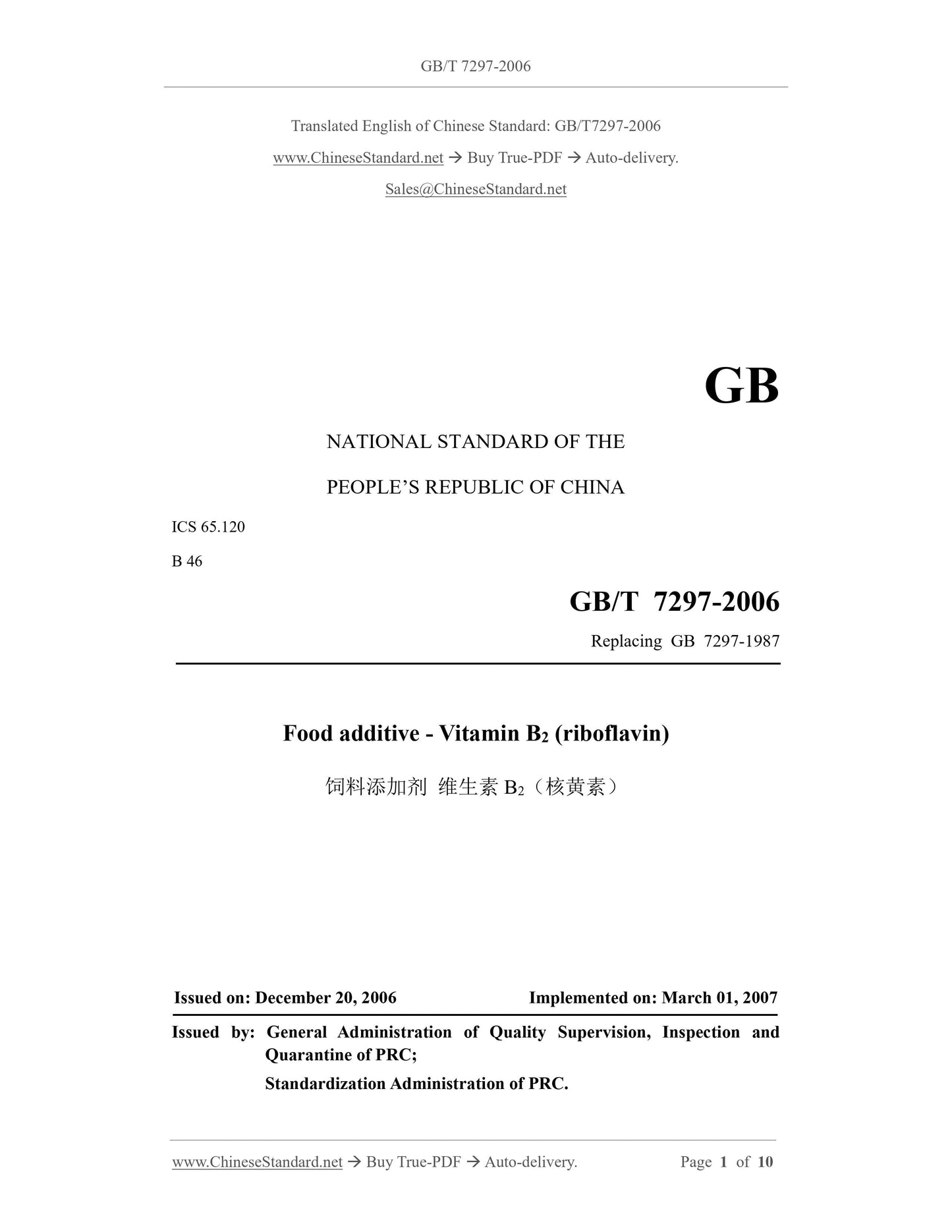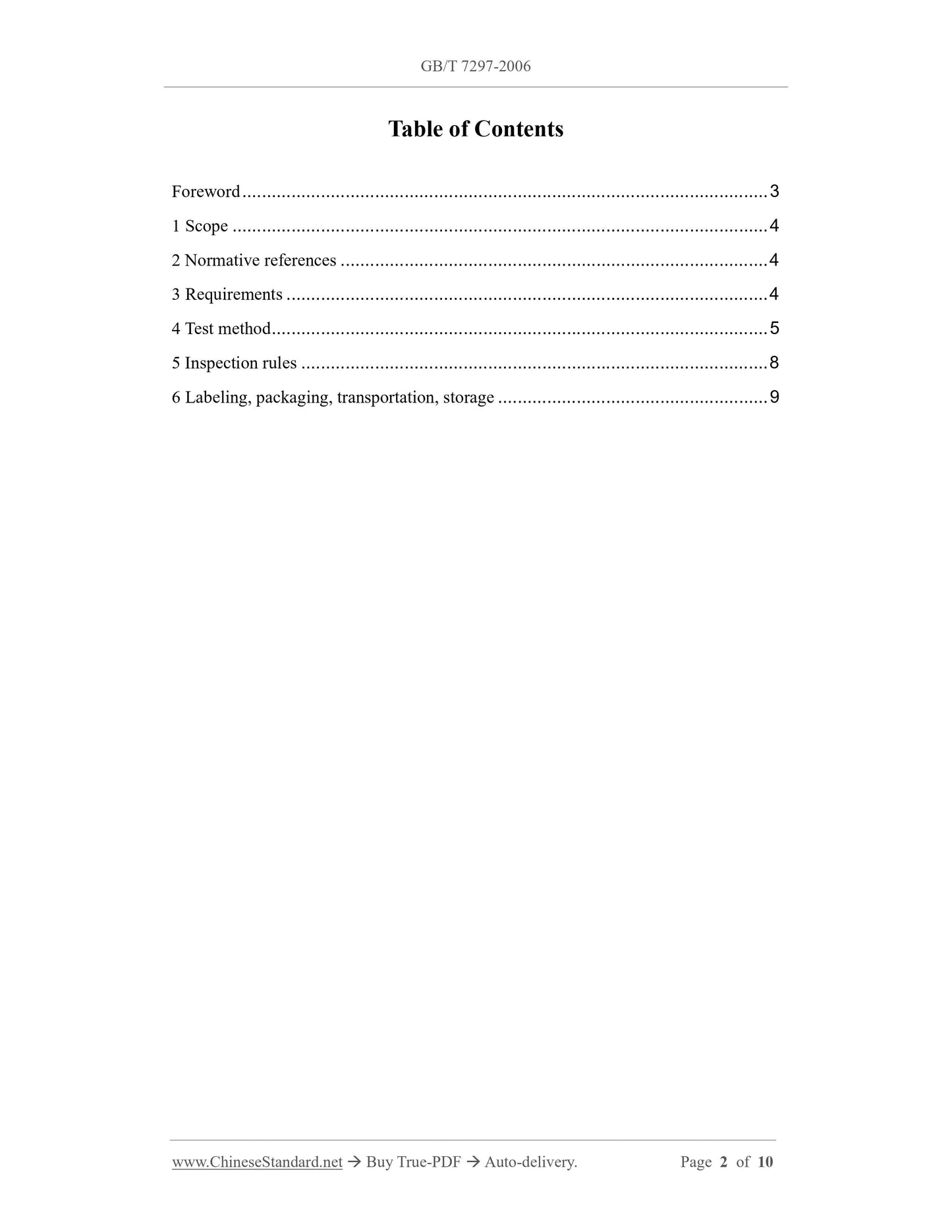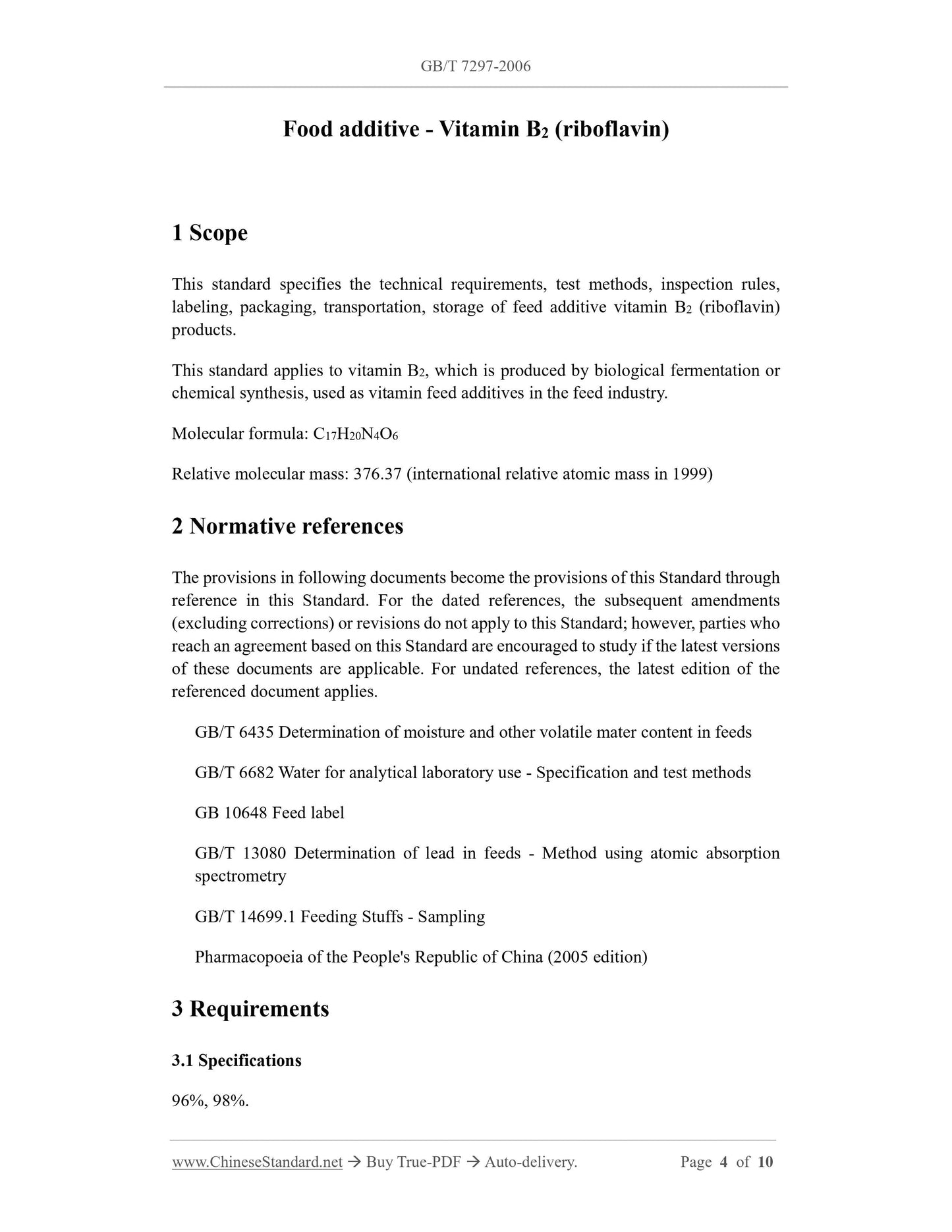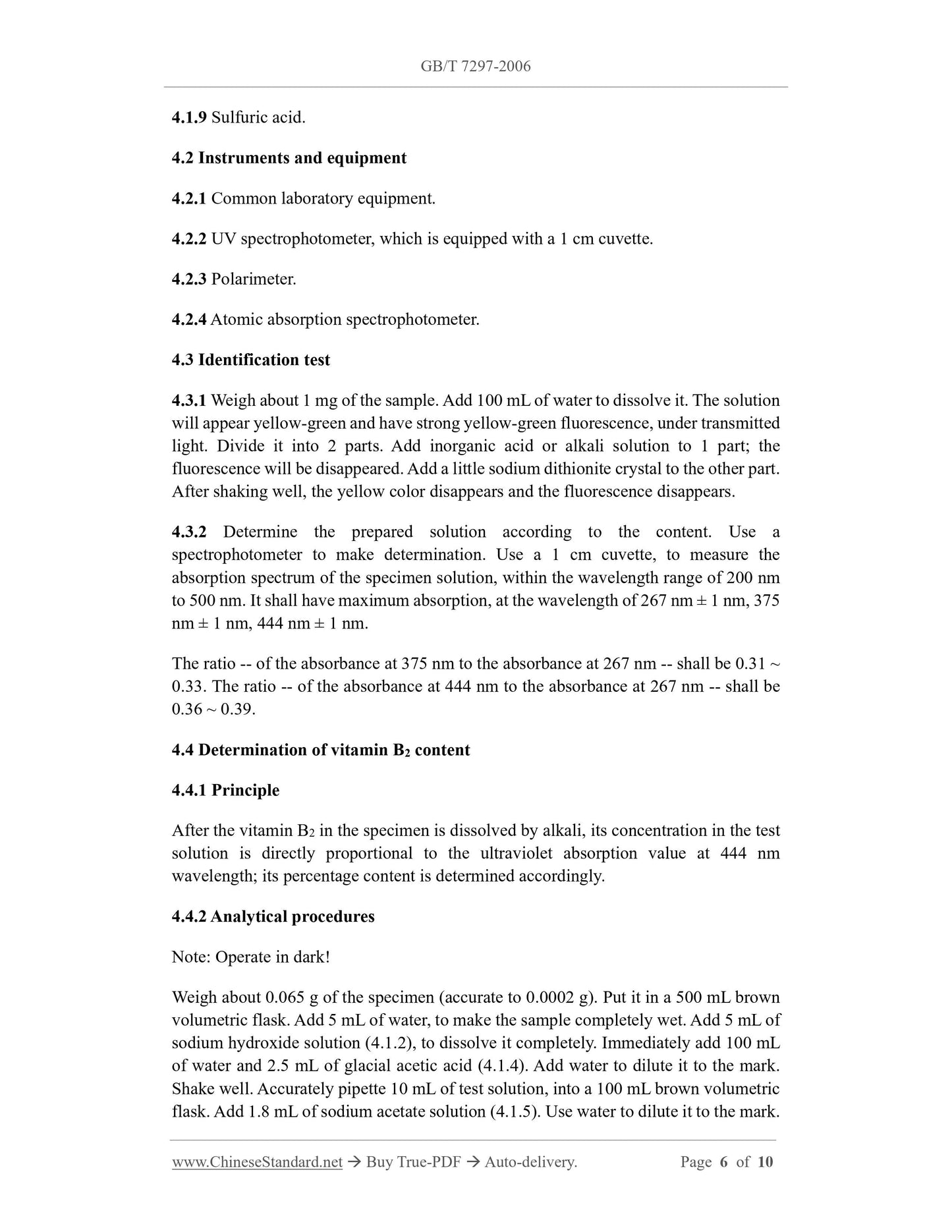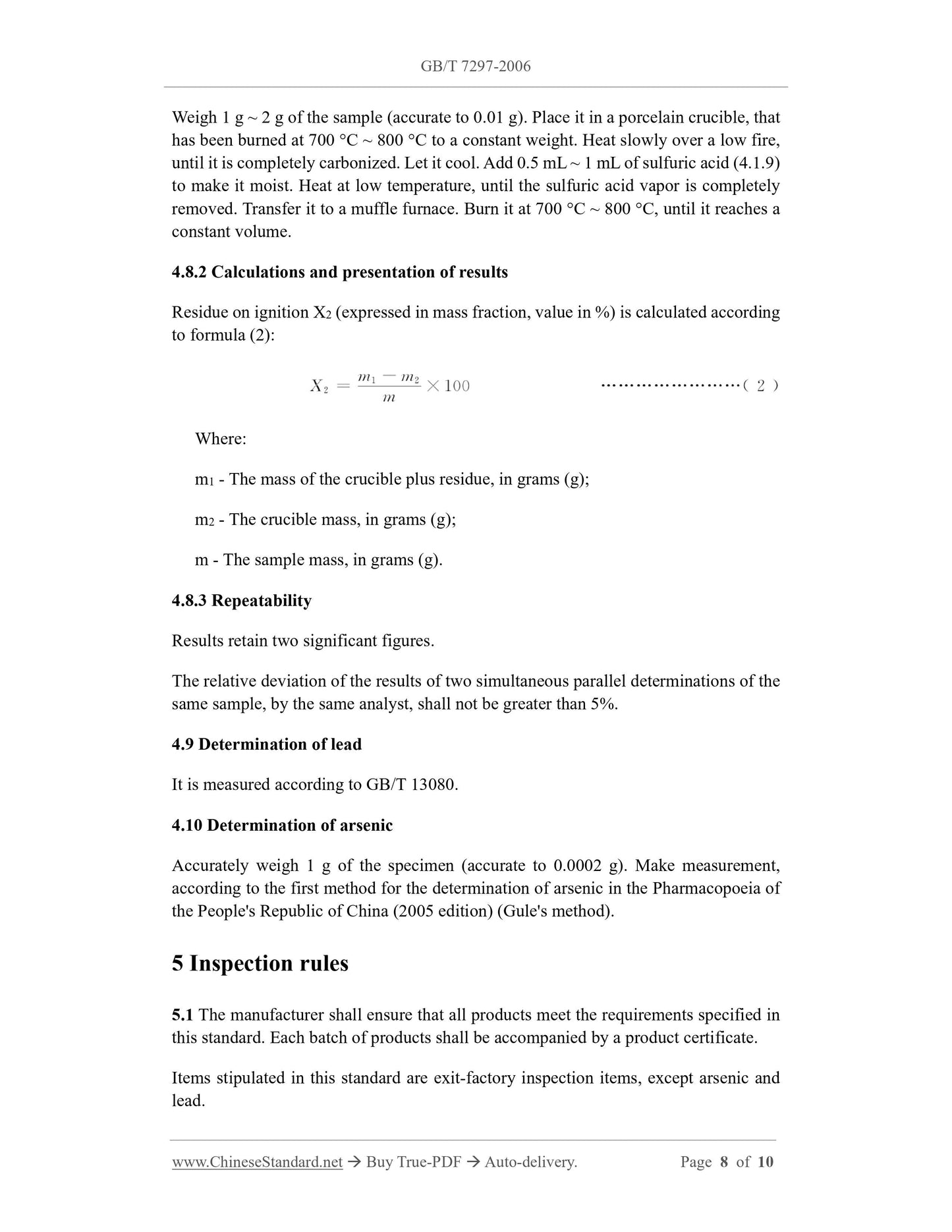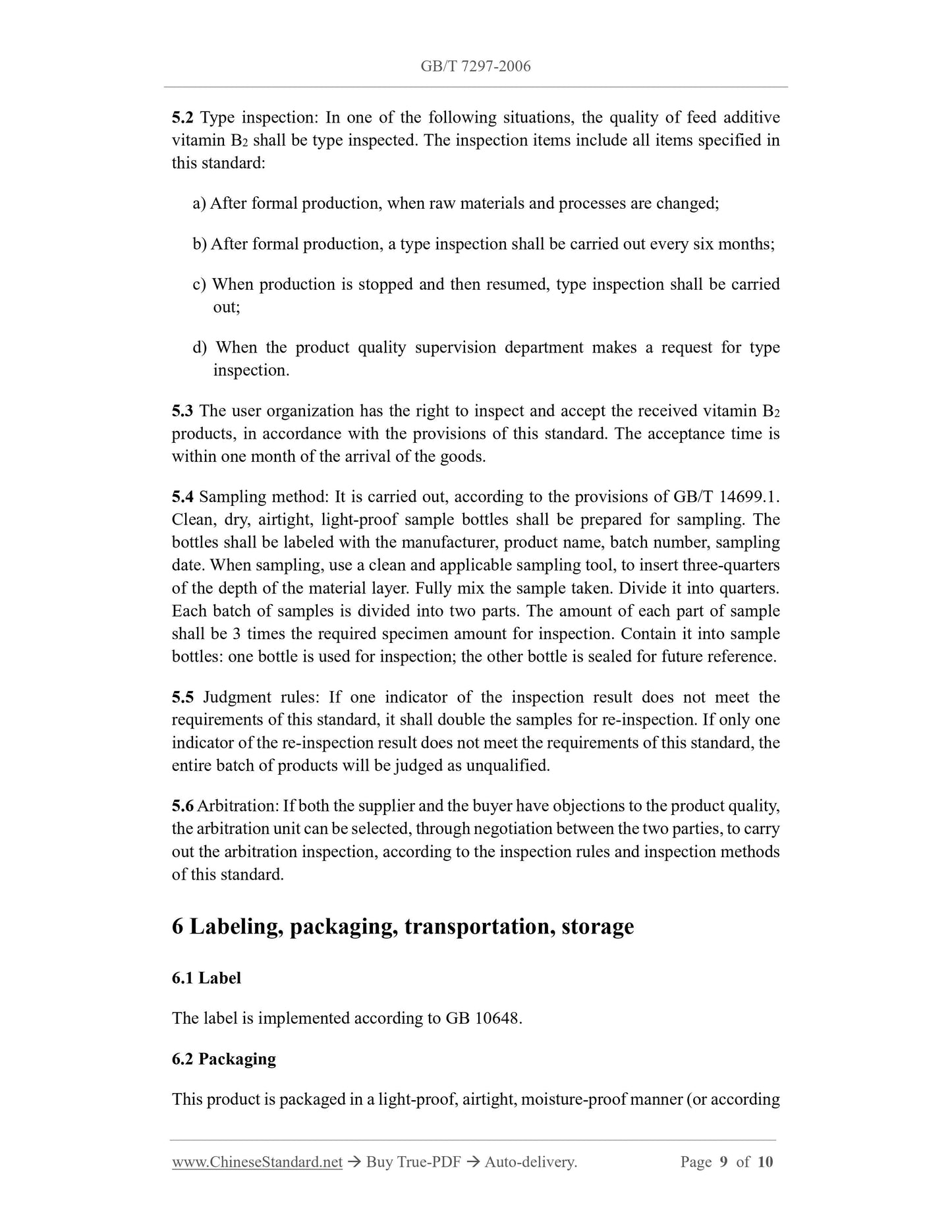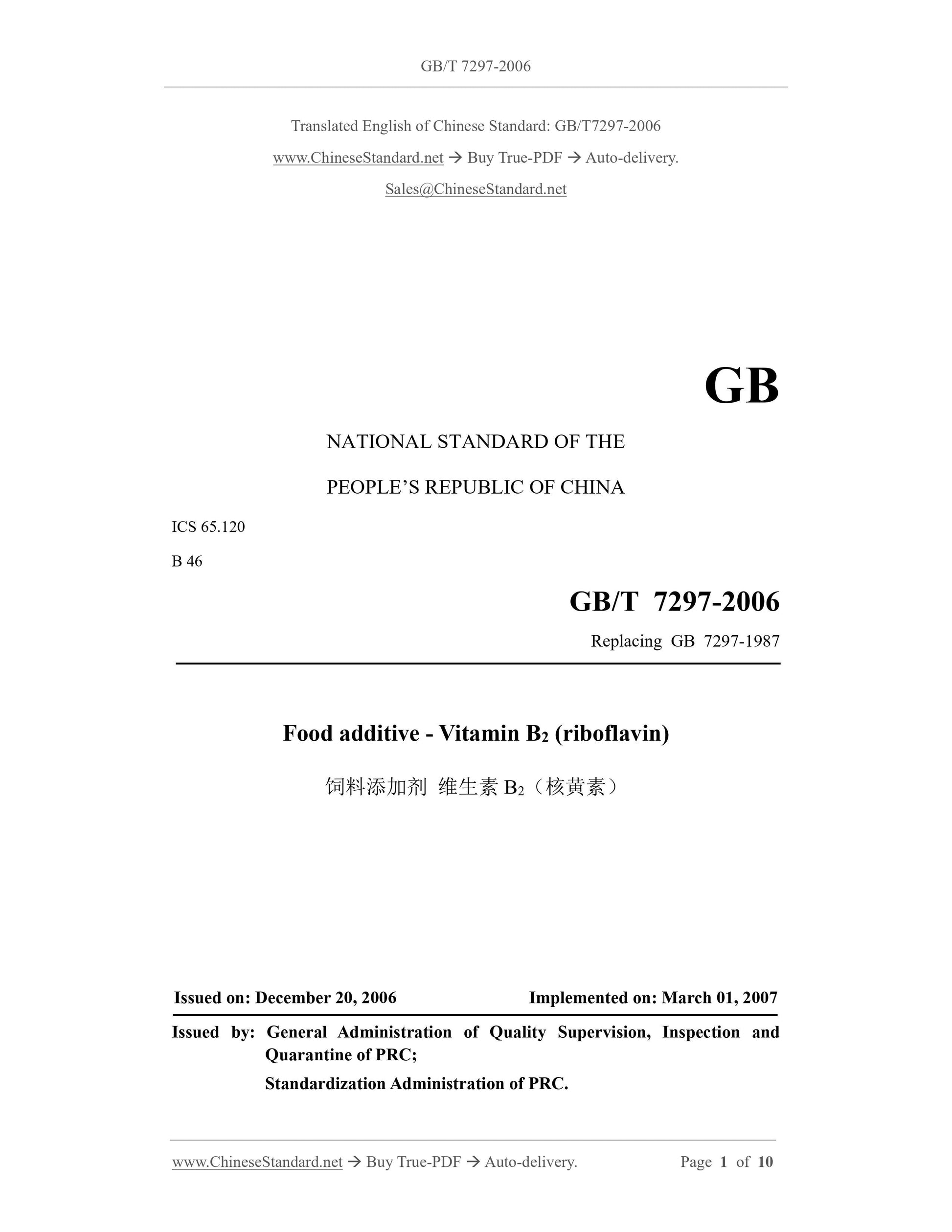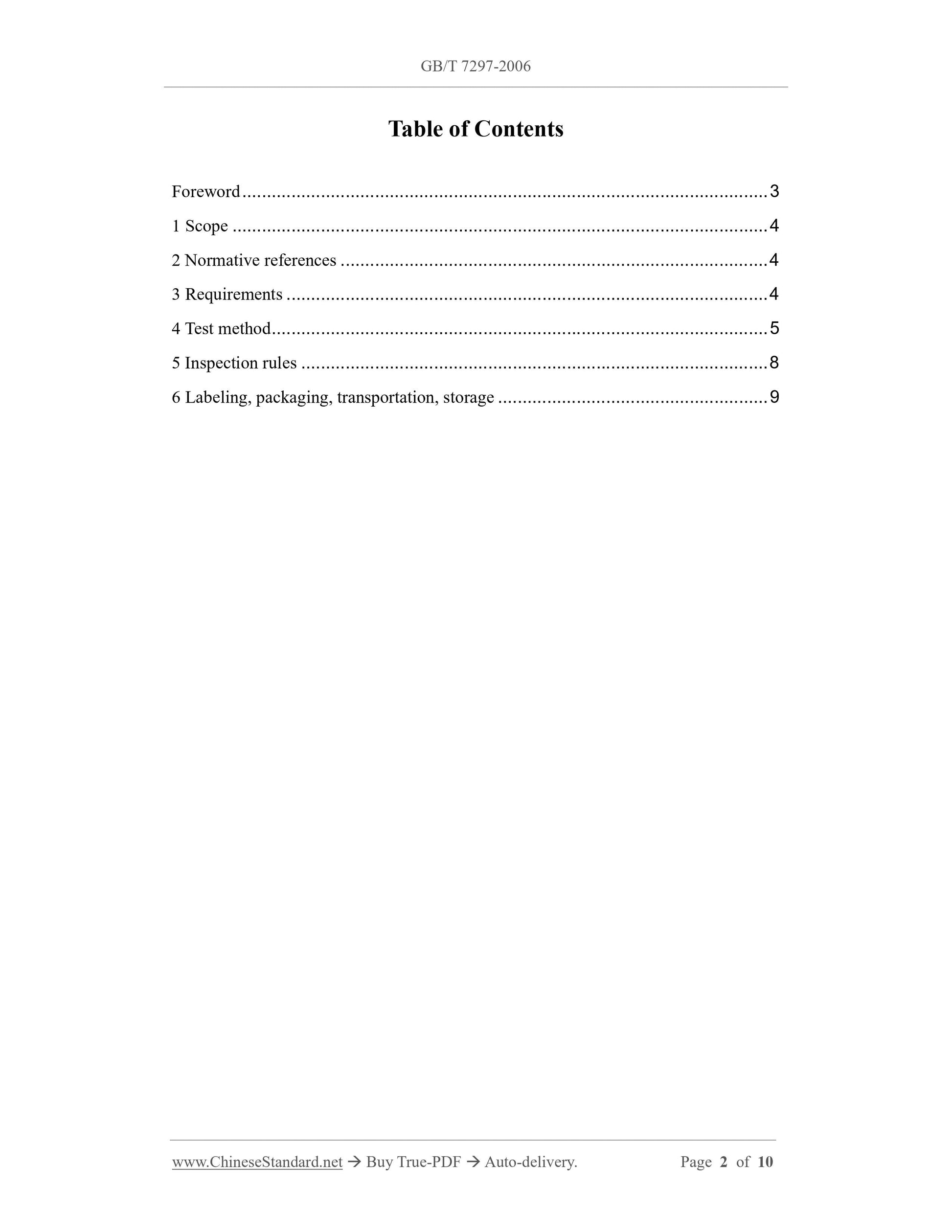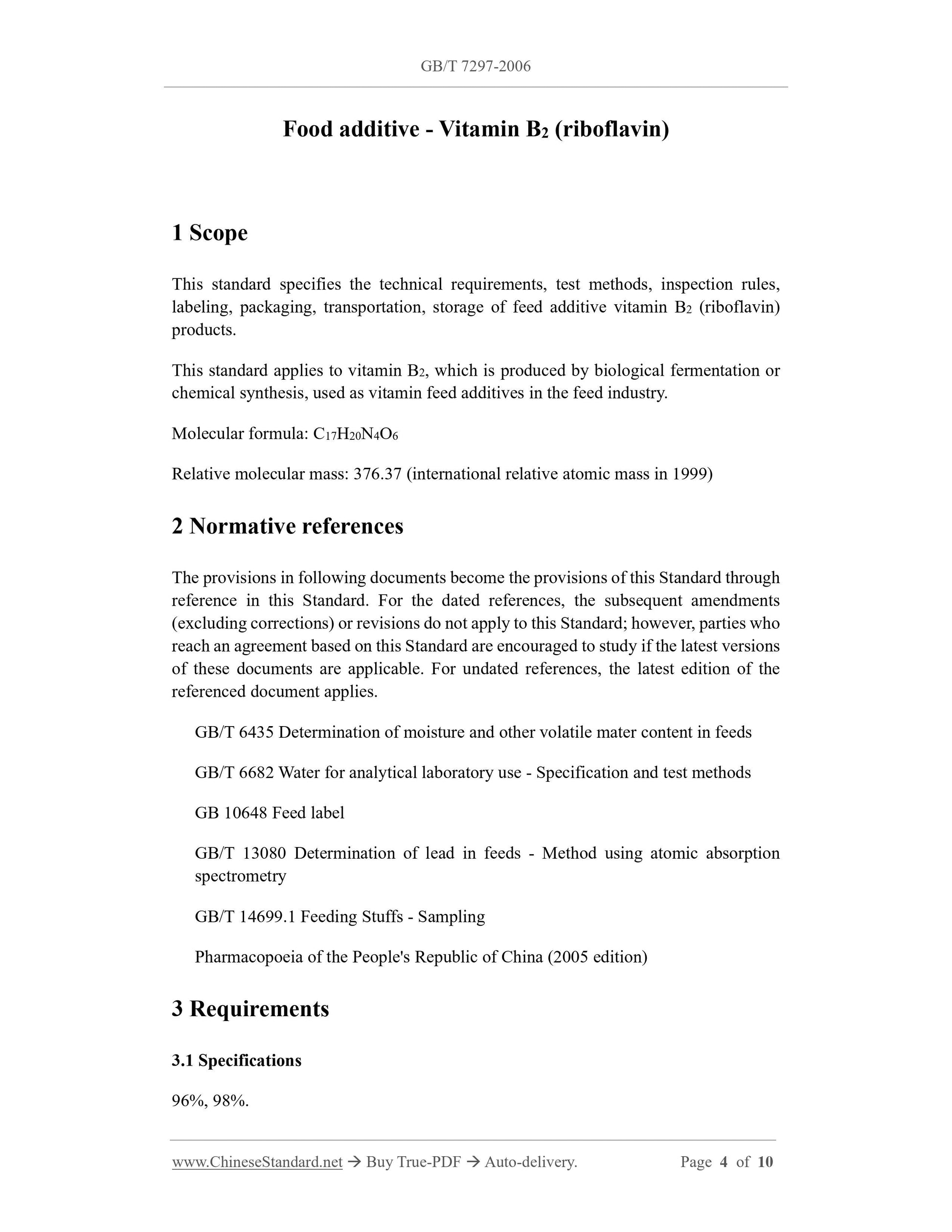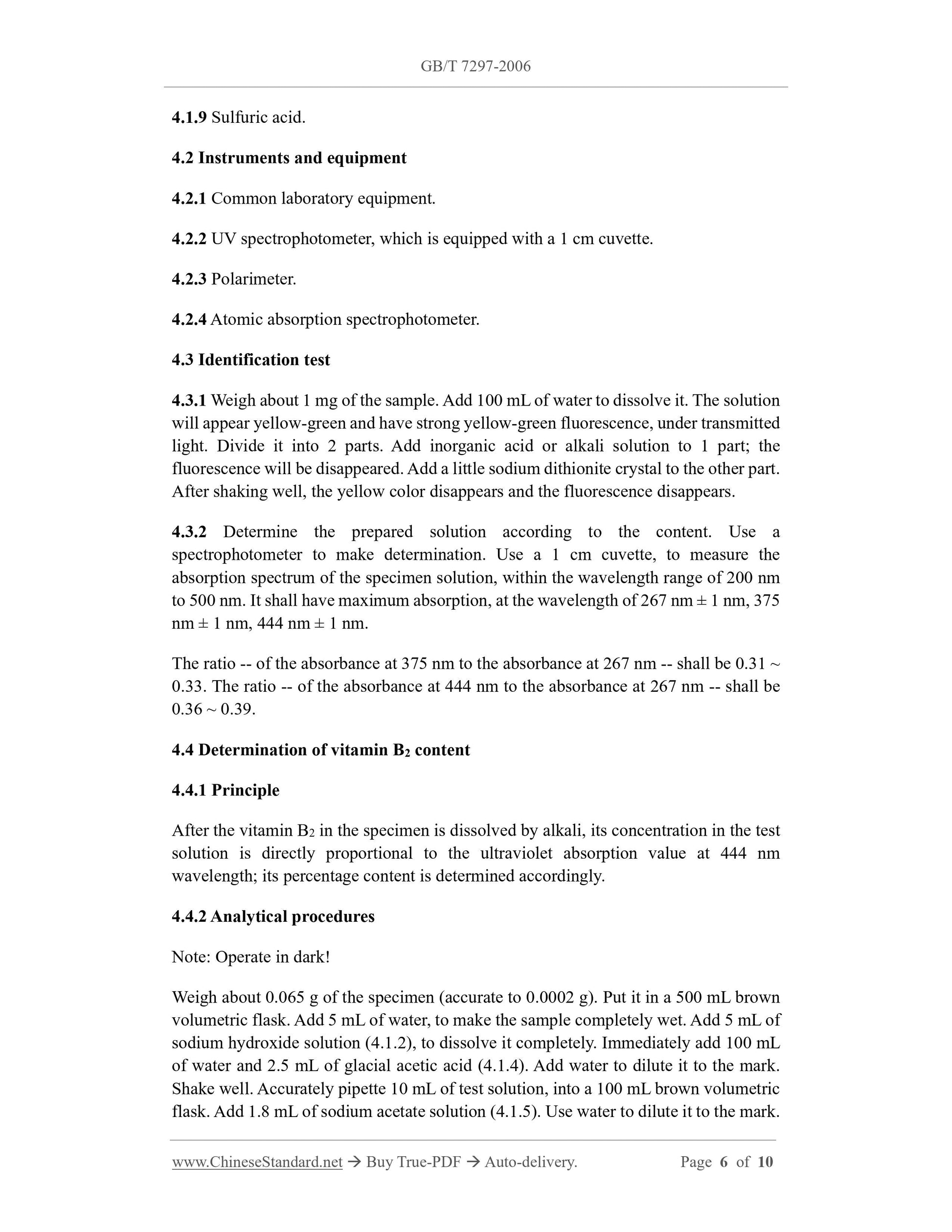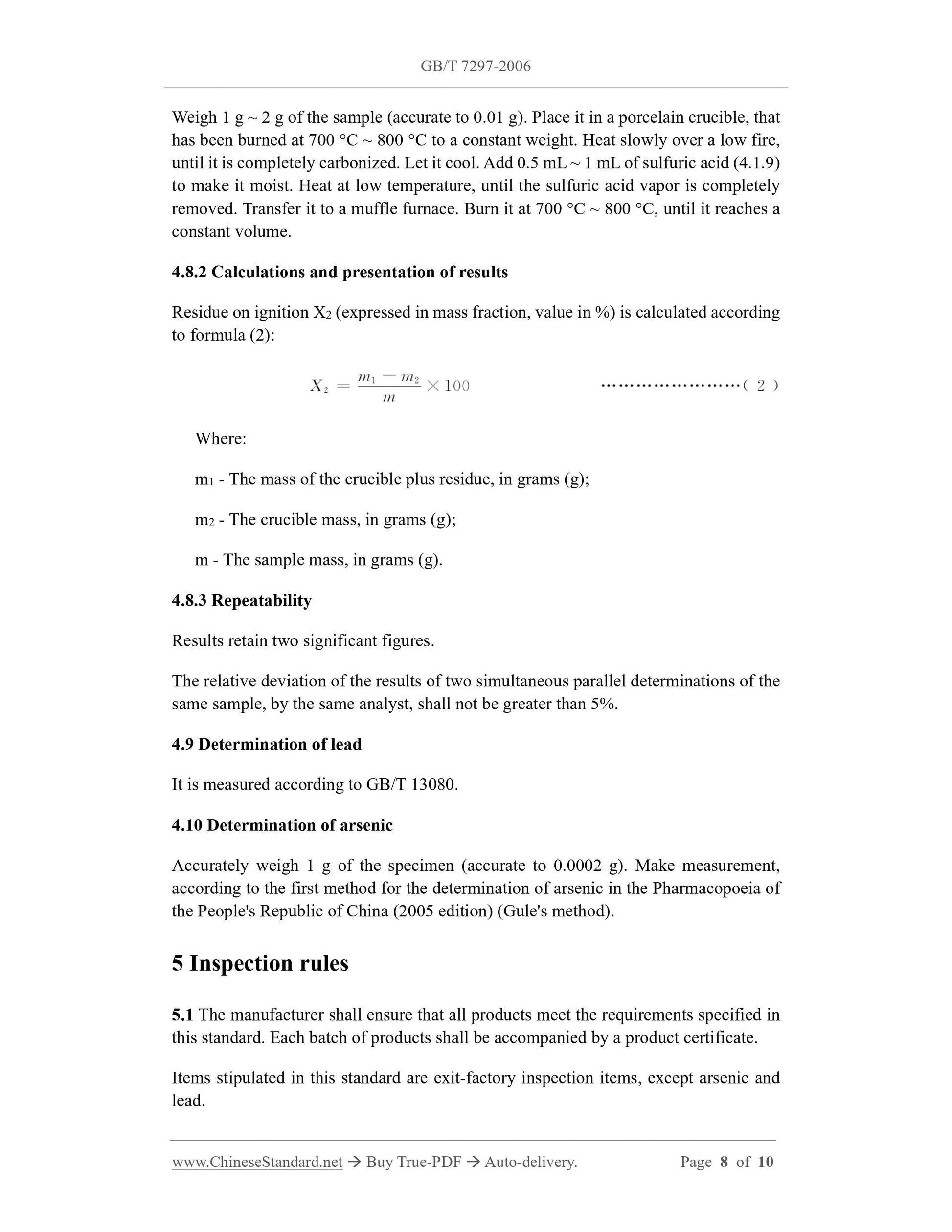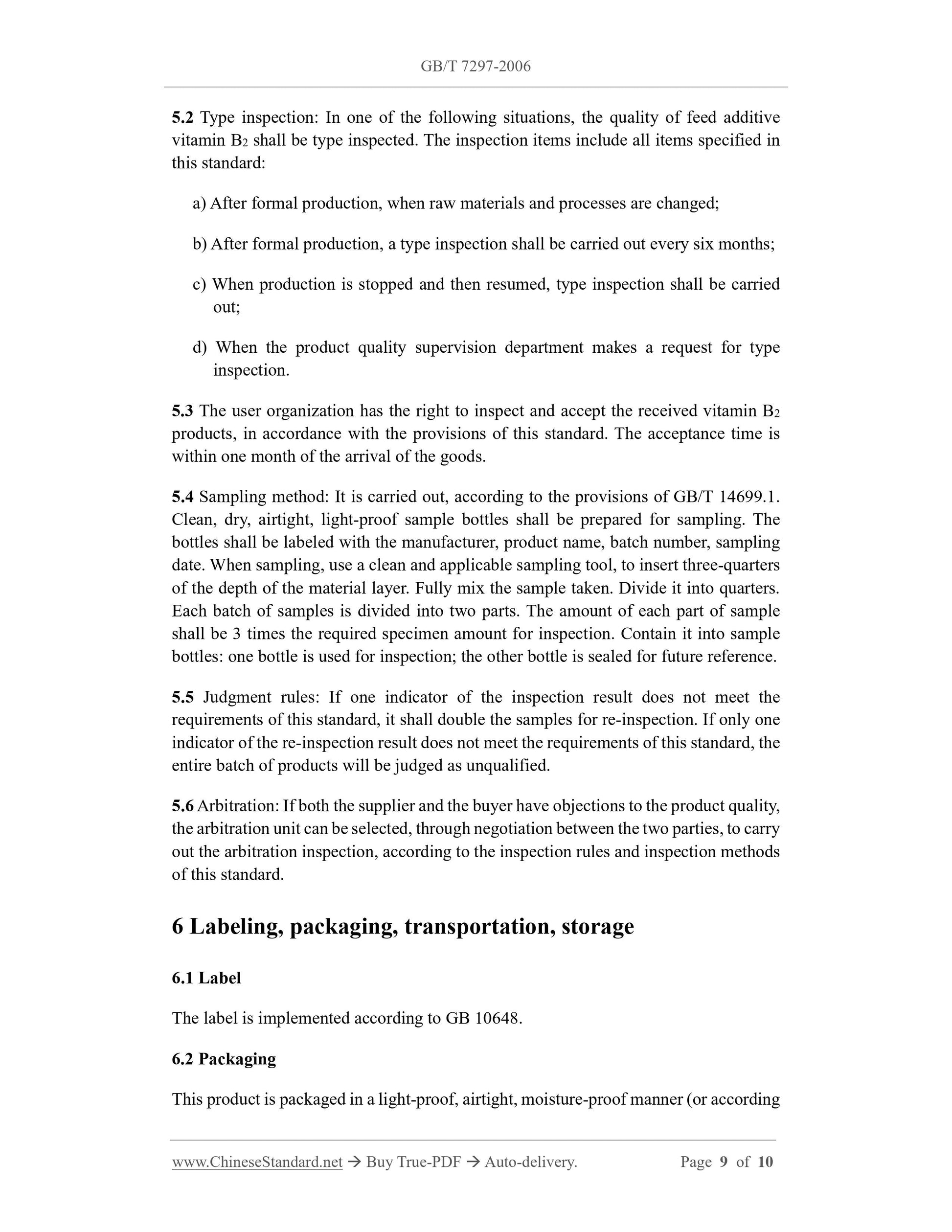1
/
of
6
www.ChineseStandard.us -- Field Test Asia Pte. Ltd.
GB/T 7297-2006 English PDF (GB/T7297-2006)
GB/T 7297-2006 English PDF (GB/T7297-2006)
Regular price
$155.00
Regular price
Sale price
$155.00
Unit price
/
per
Shipping calculated at checkout.
Couldn't load pickup availability
GB/T 7297-2006: Feed Additive - Vitamin B2 (riboflavin)
Delivery: 9 seconds. Download (and Email) true-PDF + Invoice.Get Quotation: Click GB/T 7297-2006 (Self-service in 1-minute)
Newer / historical versions: GB/T 7297-2006
Preview True-PDF
Scope
This standard specifies the technical requirements, test methods, inspection rules,labeling, packaging, transportation, storage of feed additive vitamin B2 (riboflavin)
products.
This standard applies to vitamin B2, which is produced by biological fermentation or
chemical synthesis, used as vitamin feed additives in the feed industry.
Molecular formula: C17H20N4O6
Relative molecular mass: 376.37 (international relative atomic mass in 1999)
Basic Data
| Standard ID | GB/T 7297-2006 (GB/T7297-2006) |
| Description (Translated English) | Feed Additive - Vitamin B2 (riboflavin) |
| Sector / Industry | National Standard (Recommended) |
| Classification of Chinese Standard | B46 |
| Classification of International Standard | 65.120 |
| Word Count Estimation | 7,778 |
| Date of Issue | 2006-12-20 |
| Date of Implementation | 2007-03-01 |
| Older Standard (superseded by this standard) | GB 7297-1987 |
| Quoted Standard | GB/T 6435; GB/T 6682; GB 10648; GB/T 13080; GB/T 14699.1 |
| Regulation (derived from) | China National Standard Approval Announcement 2006 No.13 (Total No.100) |
| Issuing agency(ies) | General Administration of Quality Supervision, Inspection and Quarantine of the People's Republic of China, Standardization Administration of the People's Republic of China |
| Summary | This standard specifies the technical requirements for feed additives Vitamin B2 (riboflavin) products, test methods, inspection rules and labeling, packaging, transport and storage. This standard applies to biological fermentation or chemical synthesis of vitamin B2, vitamin in the feed industry as a feed additive. |
Share
